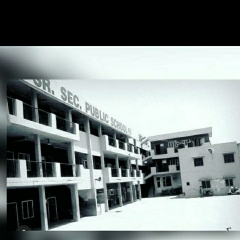Question 1 :
Metals are usually hard. Hence metals are strong and can withstand heavy loads over them. Due to this property, they are difficult to cut and can be used in the construction of heavy machines, building etc.<br/>On the other hand, non-metals are usually brittle. On hammering them they break into small pieces converting themselves into a fine powder.<br/><br/>In the following elements identify the elements that is relatively brittle?
Question 3 :
If $X$ is a metal, it will form ______ oxide, which will form ____ solution with water.
Question 7 :
If $N$ is a non-metal then no. of electrons in valence shell maybe :<br/>
Question 10 :
Assertion: You must have seen tarnished copper vessels being cleaned with lemon or tamarind juice.
Reason: Copper reacts with moist carbon dioxide in air to form copper carbonate and as a result, copper vessel loses its shiny brown surface forming a green layer of copper carbonate. Tarnished copper vessels are cleaned with lemon or tamarind juice to give the surface of the copper vessel its charateristic lustre.
Question 12 :
The metal which can replace copper from its salt solution is:
Question 13 :
A person working with phosphorus suffers from a disease in which bones decay. It is known as?
Question 17 :
Zinc metal is added to aluminium sulphate solution, no reaction takes place because:
Question 18 :
When a base combine with metal it forms metal salt/base and releases:
Question 19 :
According to order of reactivity series sodium can displace ___________ metals form metal salt solutions.
Question 20 :
Four students A, B, C and D took aqueous solutions of zinc sulphate and iron sulphate in two test tubes I and II and dropped metal pieces of Iron and Zinc in the two solutions. After several hours, they made observations and recorded their findings in the form of a table given below:<br/><table class="wysiwyg-table"><tbody><tr><td>Observation</td><td>Metal</td><td>Solution</td><td>Change in colour of the solution</td><td>Deposit/Residue obtained</td></tr><tr><td>By A</td><td>Fe</td><td>ZnSO$_4$</td><td>turned green</td><td>Silver grey coating</td></tr><tr><td></td><td>Zn</td><td>FeSO$_4$</td><td>no change</td><td>no change</td></tr><tr><td>By B</td><td>Fe</td><td>ZnSO$_4$</td><td>no change</td><td>black residue</td></tr><tr><td></td><td>Zn</td><td>FeSO$_4$</td><td>colour faded</td><td>grey coating</td></tr><tr><td>By C</td><td>Fe</td><td>ZnSO$_4$</td><td>no change</td><td>no change</td></tr><tr><td></td><td>Zn</td><td>FeSO$_4$</td><td>turned colourless</td><td>black residue</td></tr><tr><td>By D</td><td>Fe</td><td>ZnSO$_4$</td><td>no change</td><td>grey residue</td></tr><tr><td></td><td>Zn</td><td>FeSO$_4$</td><td>no change</td><td>black reside</td></tr></tbody></table>Who reported the correct observation?
Question 23 :
When metallic copper comes in contact with moisture, a green powdery / pasty coating can be seen over it. This is chemically known as




























































